Eastern red mum in the garden
Eastern red girl patrolling the cherry tomatoes.
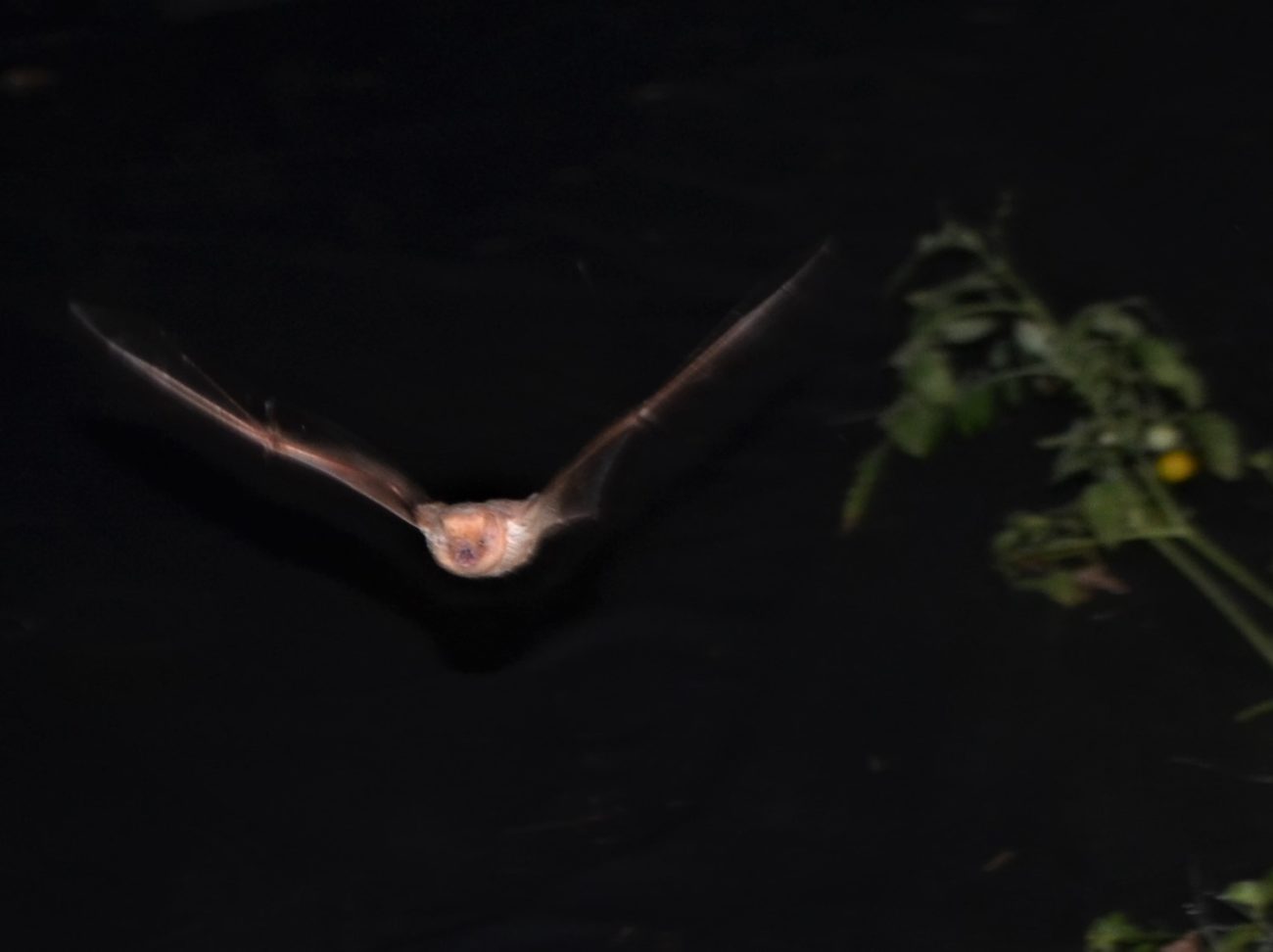
Eastern red girl patrolling the cherry tomatoes.

Our 100th intake of the year is this beautiful southern yellow pup!
We distinguish southerns by their mossy, wooly, olive colored fur.
Northerns are more “Baby Huey” like, with shorter, yellowish fur.
This pup has just started eating whole mealworms.
He’s also stretching his wings and doing pushups.
He’ll be flying soon!
We just took in our 103rd bat of the year, 39 of which came to us in the last 2 weeks.
June is always crazy around here and this year is no exception.
We’ve had bats of seven species this month; northern yellows, southern yellows, Seminoles, eastern reds, free-tails, velifers, and evening bats.
It’s crazy, exhausting, and exhilarating work. But what a priviledge and an honor to be able to give these pups a second chance at life.
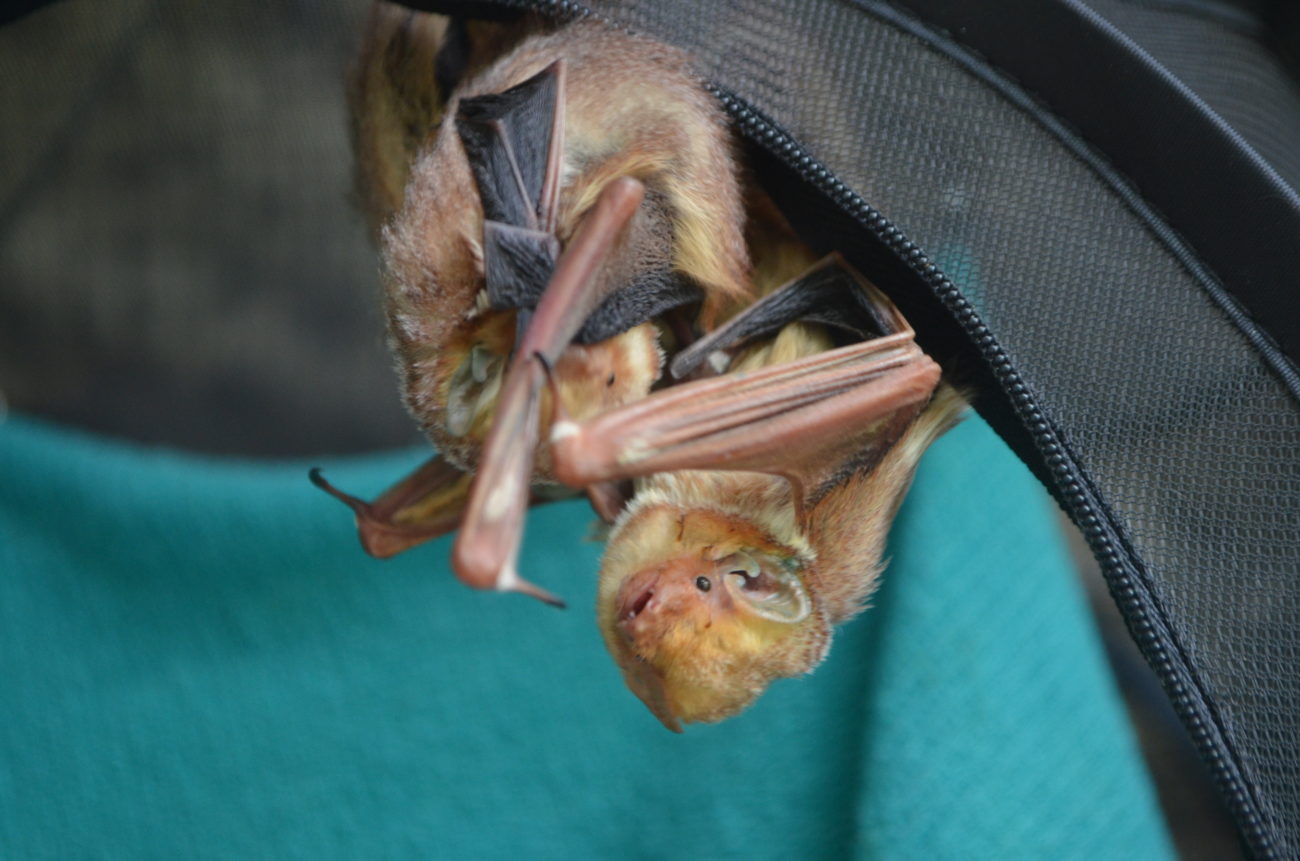
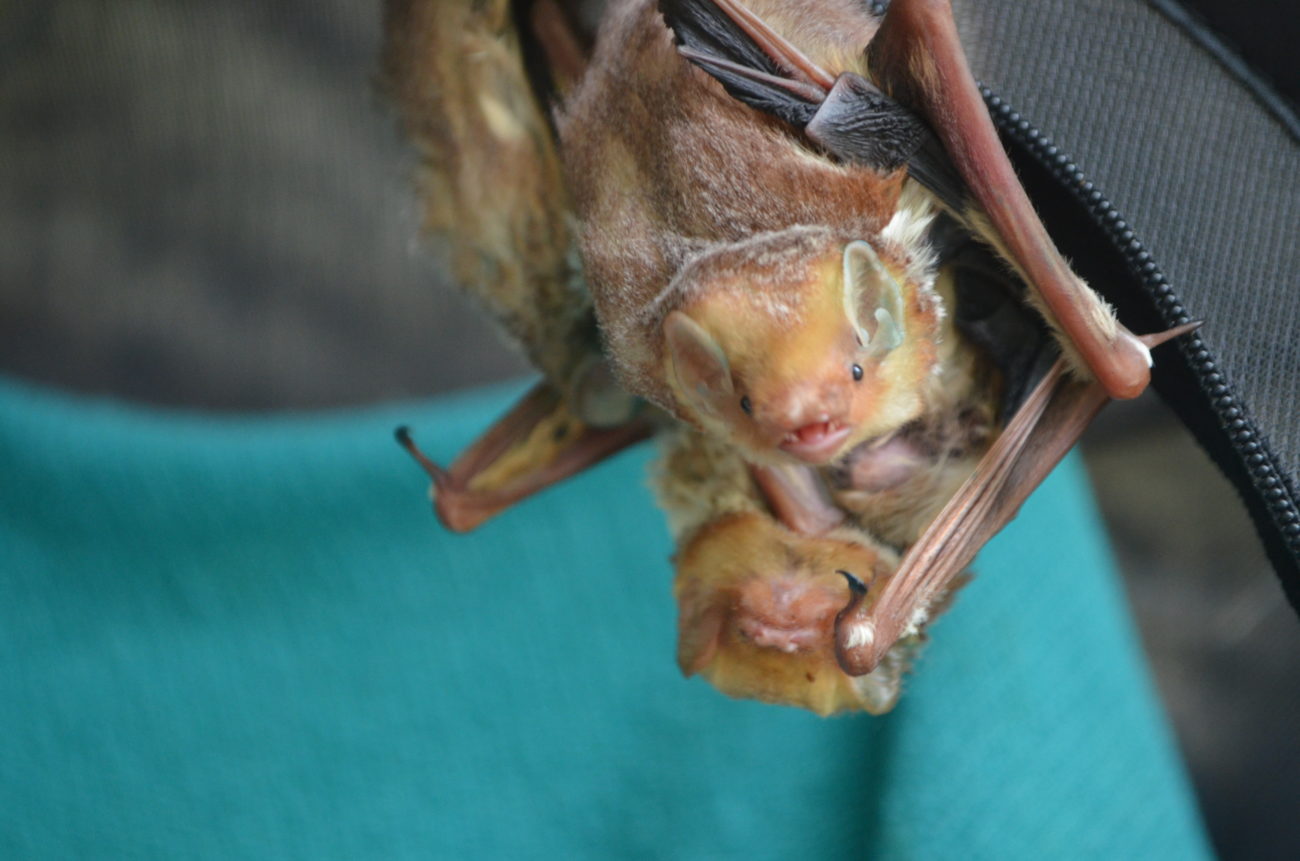
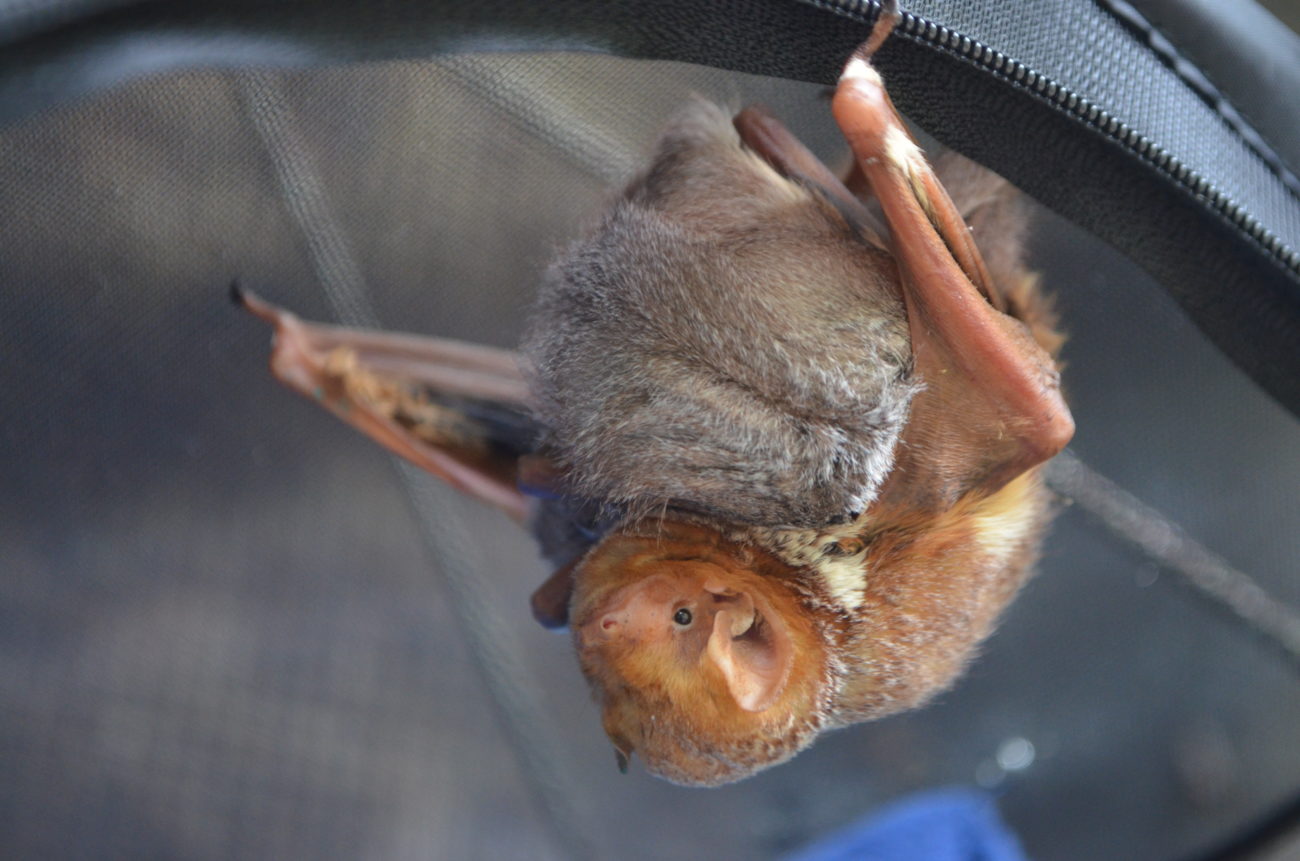
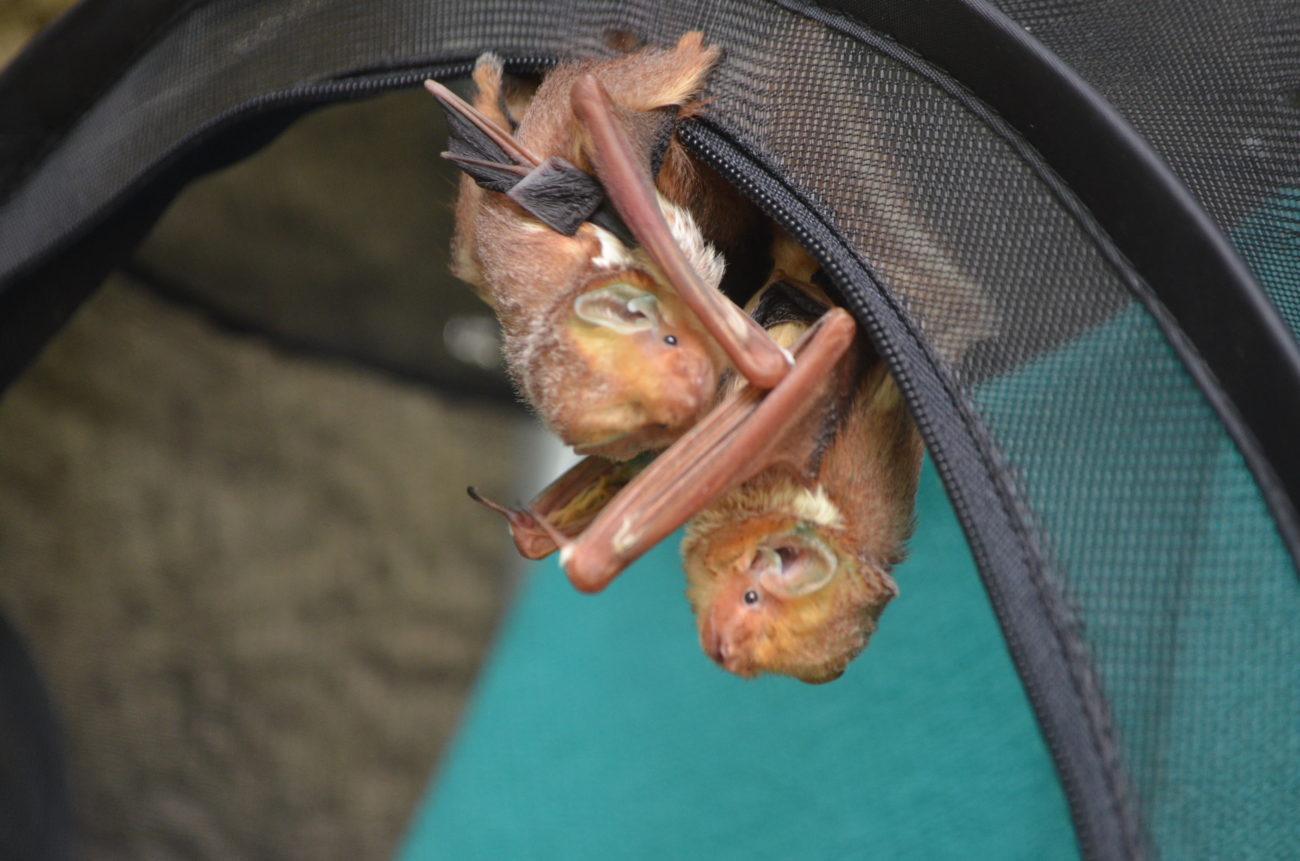

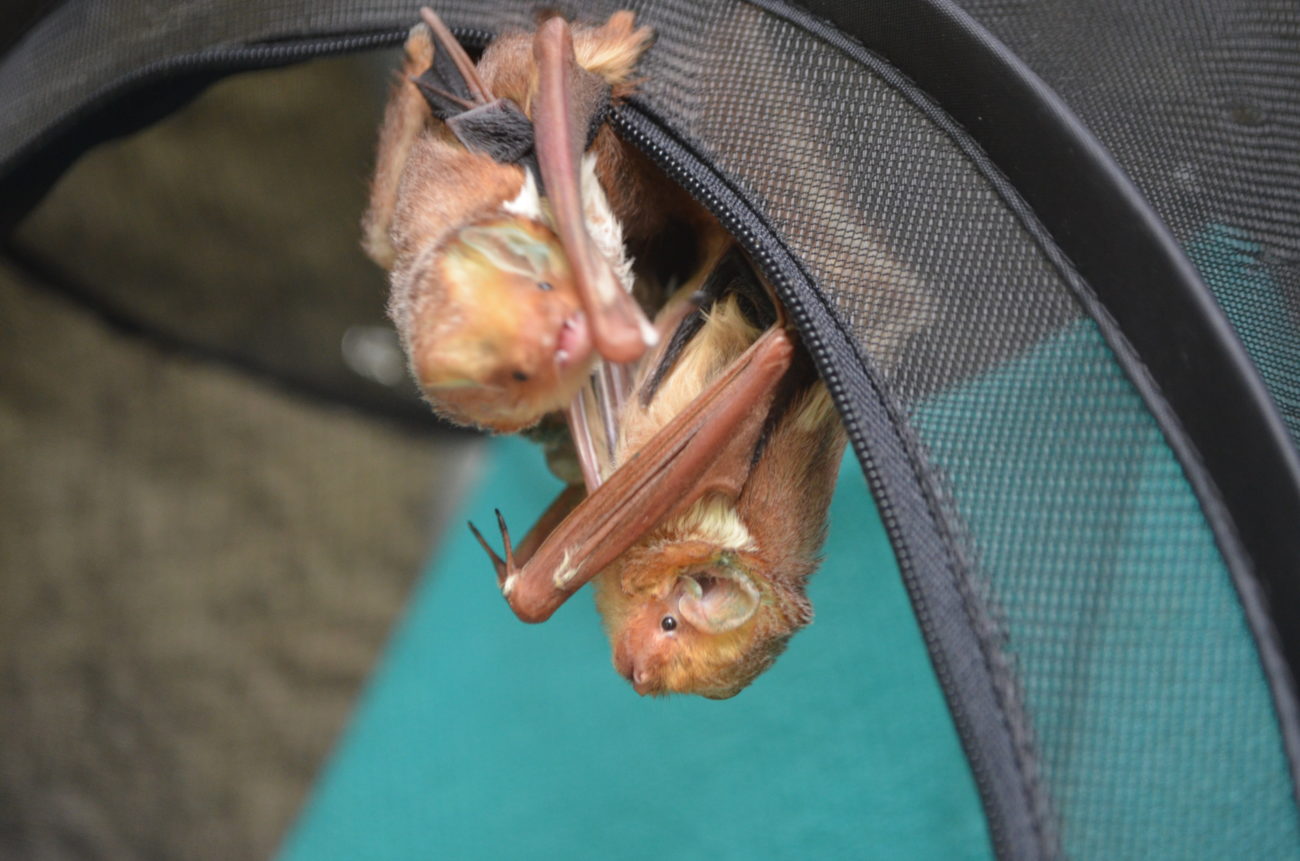
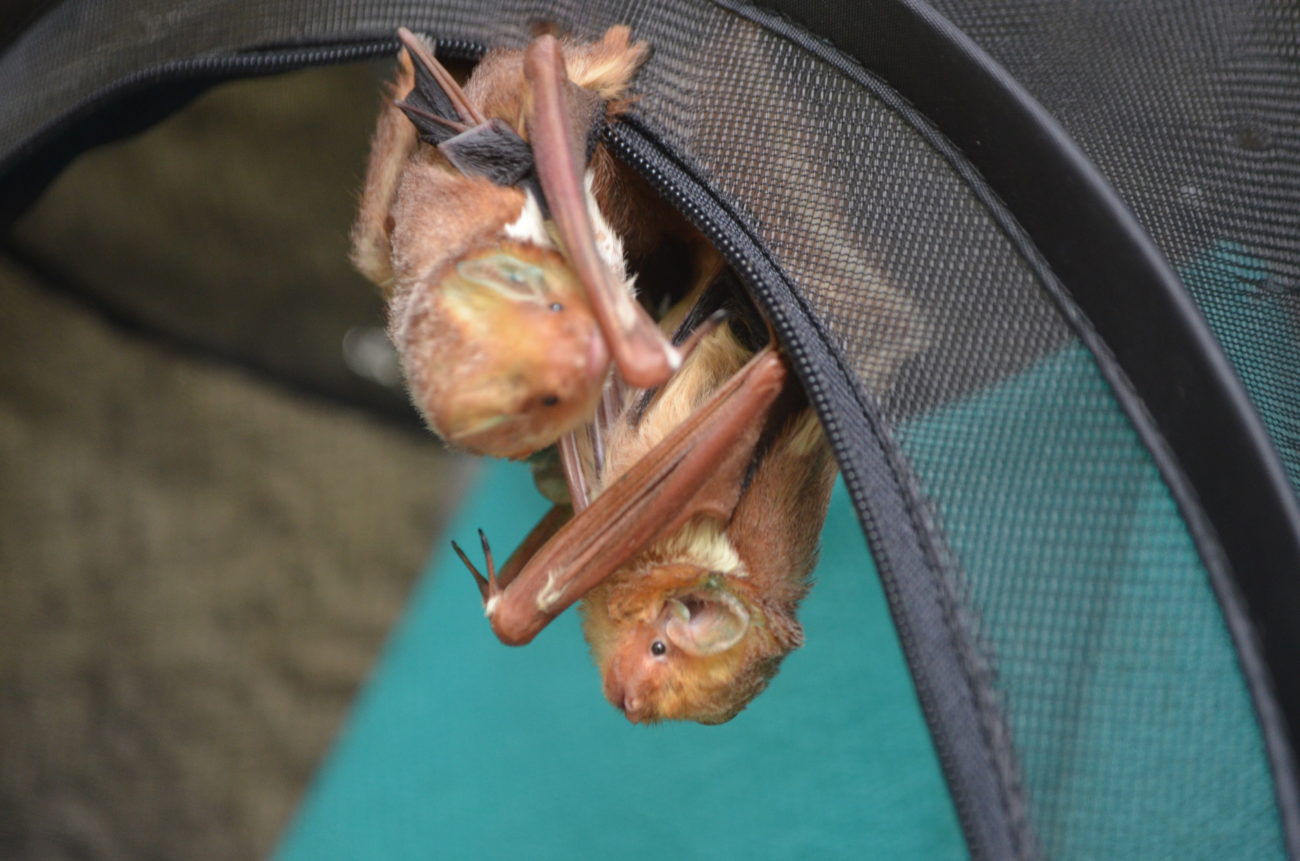

This pup was saved from a swimming pool skimmer by Jerry early Sunday morning.
He’s a juvenile Seminole bat, and was likely attempting to drink on his own for the first time when he crashed in the pool. Once in the water he could not escape, even though Jerry had a ramp for trapped wildlife. So please be like Jerry and have ramps, leave floaties in the water, and check those skimmers every morning. Give little beauties like Groot here a second chance!
https://www.amazon.com/Swimline-70200SL-FrogLog-Critter-Saving/dp/B004UHY2TY/ref=sr_1_1?ie=UTF8&qid=1497360924&sr=8-1&keywords=frog+log+critter+escape+ramp
This red bat family was found grounded in the middle of a side-street in Dripping Springs. The young single-mum was a pup herself just last summer and she may have been struggling to feed and manage her young family. She was emaciated, and was so lucky that Jacque spotted her before the grackles or bluejays did. Nice save Jacque! She and the pups have been rehydrated and their bellies filled and are now having a snooze at the top of the aviary. She knows she and her pups are safe for now.

That night the mum flew and the pups watched her for a while, then the bigger pup joined her. The little pup felt pretty lonesome and after a while took her very first flight. Both pups negotiated all the other flying bats and landed successfully at the top of the cage. By morning they had found mum and the whole family was snoozing together once it got light.

Littlest pup after first flight!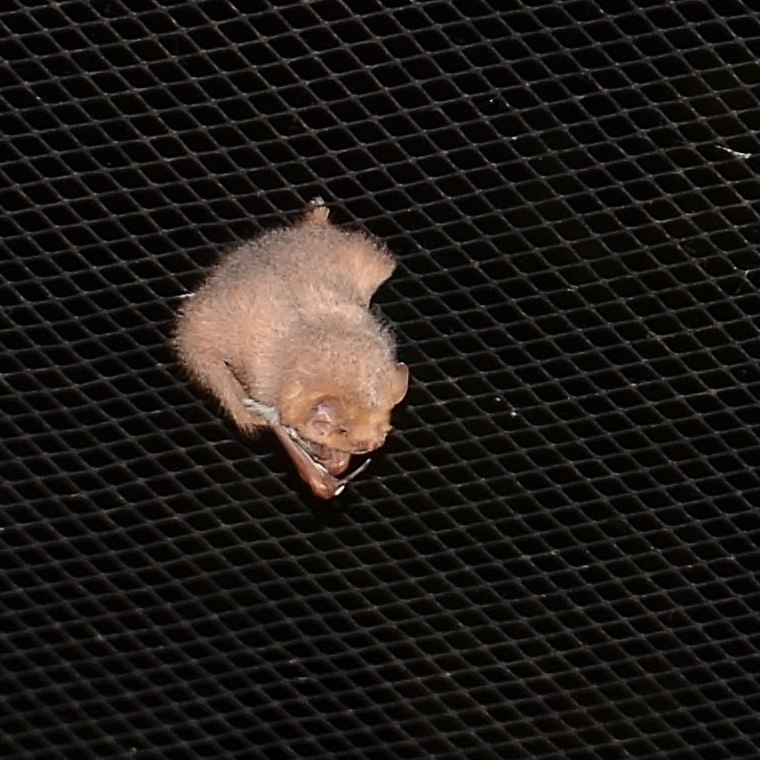
Older pup
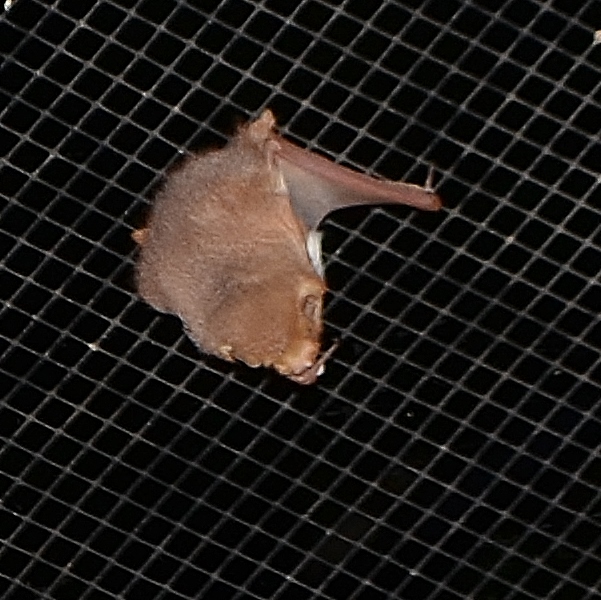
Pups have to watch out for the other flyers
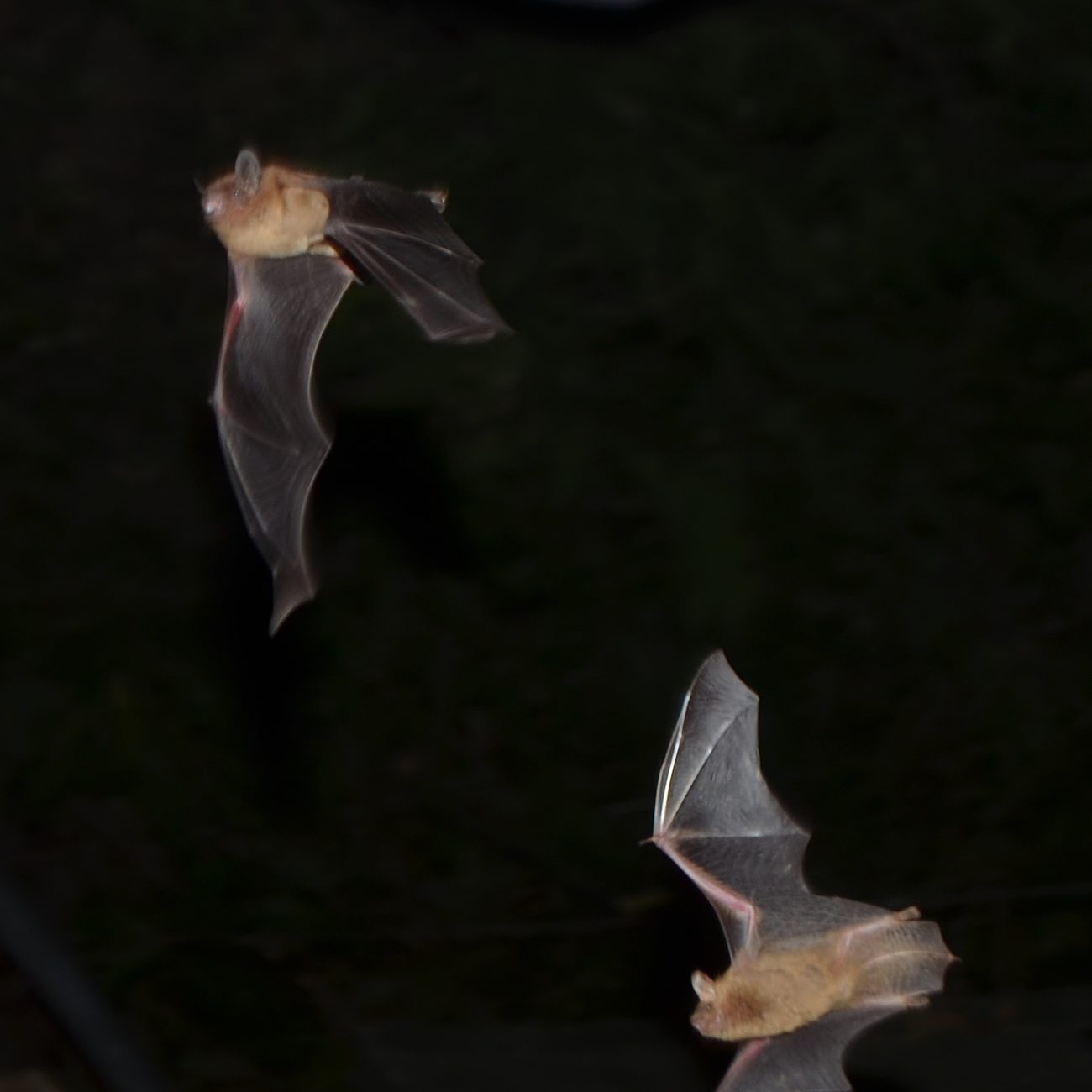
Waiting for mum to return
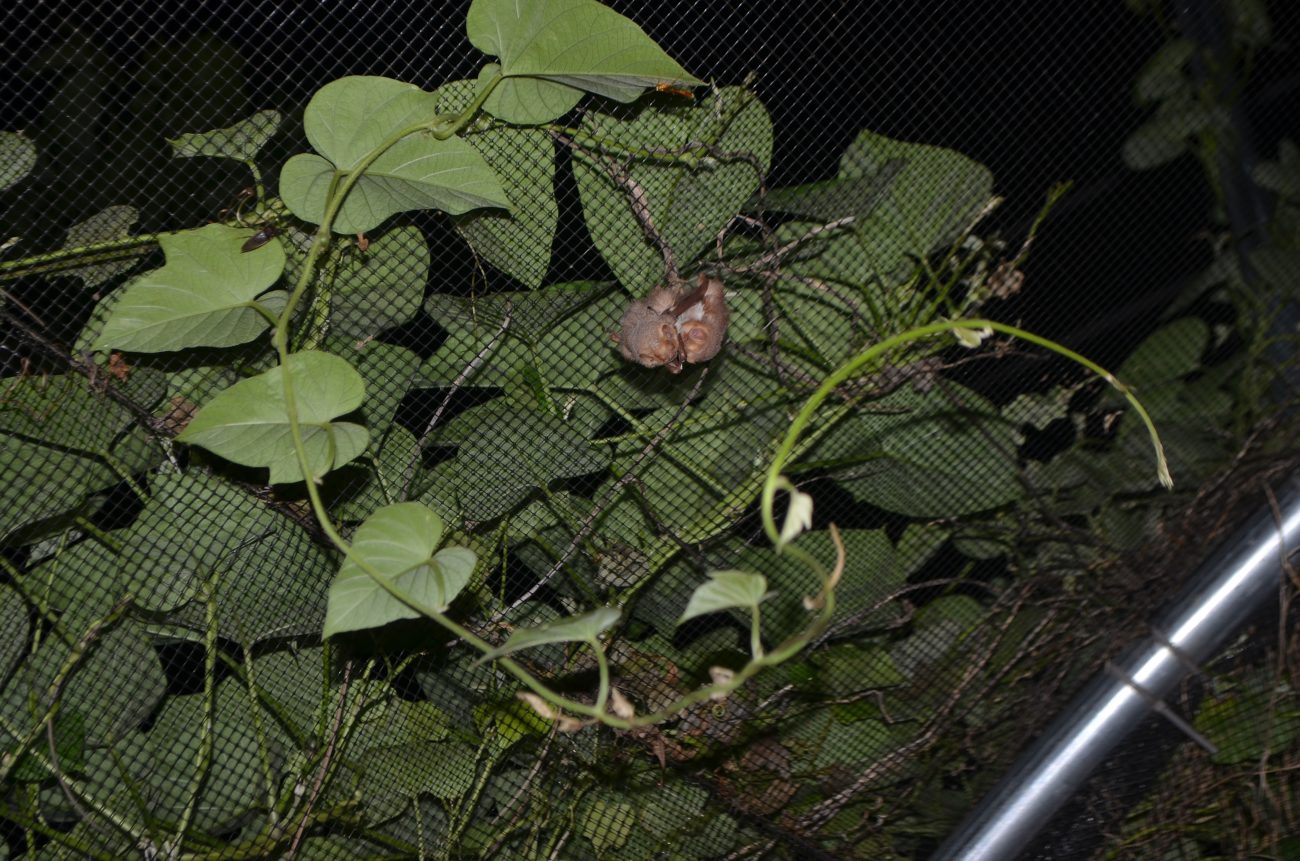
The next morning mum roosted in the sun, we had to shade them
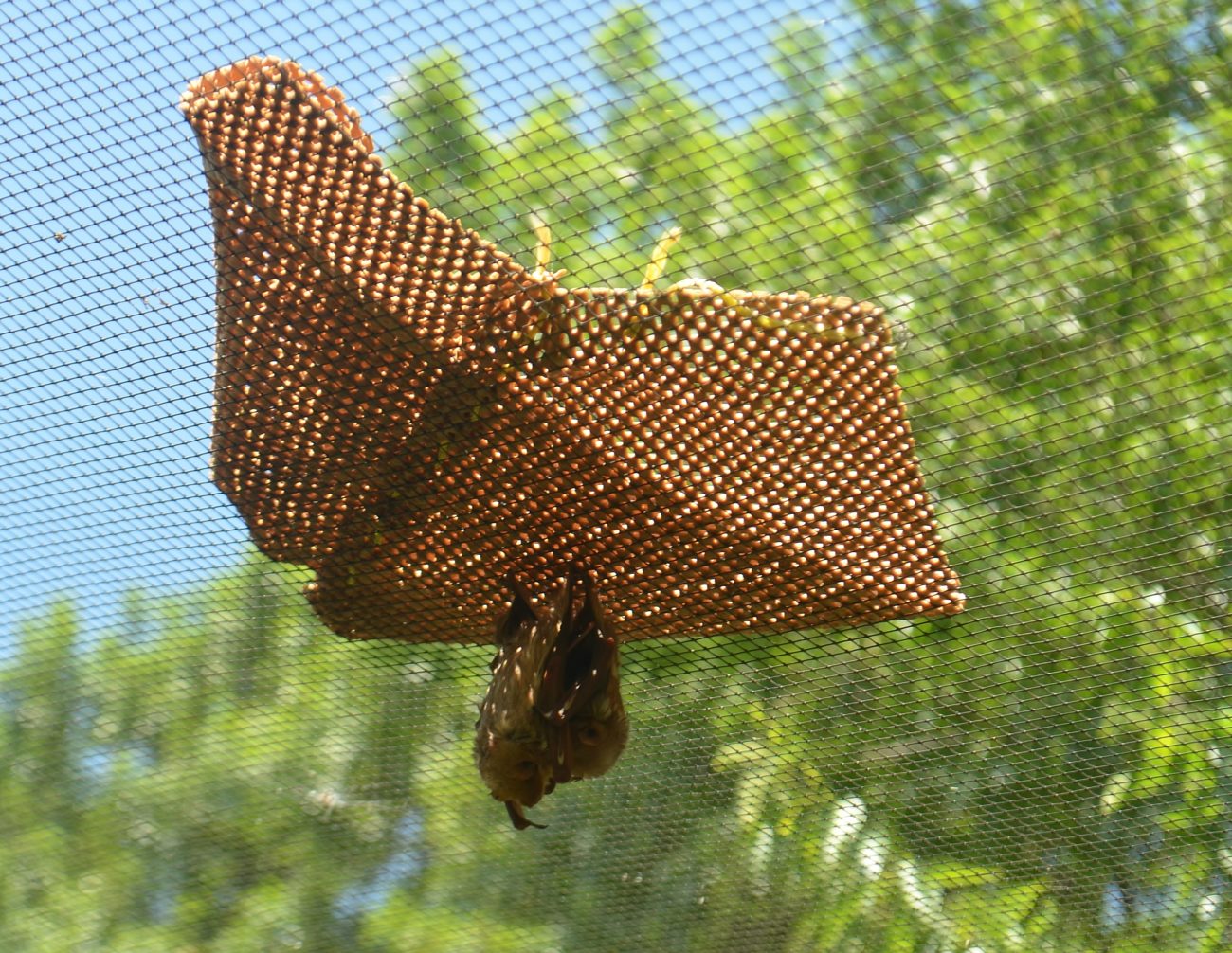
This pup (D-Day) found himself on the wrong side of Congress Avenue Bridge on June 6th. Dianne, on her rebirth day, was called by a worried tourist and went down and belly crawled under the railing to rescue him. He probably crawled out of his crevice looking for a mum that got picked off by a predator. He was born a little early (average date of birth for free-tails is June 10th and he was likely born in late May) but lots of pups were 2-3 weeks early this year. We’ll do our best for this little guy and hopefully release him back at the bridge once he’s graduated from ABR Flight School!
Left to right: Evening bat male, red bat female, Seminole bat male
These pups should all still be with their mums and they know it. The bat milk replacer doesn’t taste the same and the mealworm guts are interesting, but not what they really want. They would normally be getting a taste of insects at this age by nuzzling their mum’s mouth, and they seem to need the supplemental nutrition with the milk replacers we use. Once they eat some guts, they end up with the worm in their mouths as a pacifier and pretty much just zone out. See video below:

Sometimes they tilt their heads back like a raccoon eating a grape!
“These tomatoes are almost as red as my fur! Looks like they are ready to be eaten!”- Gabe the red bat
This season’s garden is a hit! Our flight cage is bursting with summer colors as our cherry tomatoes ripen, and our eastern red bats enjoy pampering from volunteers. The garden growing within the flight cage offers a natural, and energized environment for our bats. By attracting moths, the garden allows bats to practice their predatory skills during flight. Offering bats in rehabilitation an opportunity to exercise behaviors that are necessary to survival in the wild make the flight cage and the bat garden an important part of our rehabilitation process. An appreciation for the summer crop is shared by the bats and also our volunteers, who enjoy snacking on sweet, refreshing cherry tomatoes while working hard in the summer heat

First pups of 2017! Two weeks earlier than ever!
Evening bat mum munches a mealworm while her pup nuzzles her.
She sustained wing injuries that grounded her and they suffered ant bites before being rescued.
No small thing to rescue a ball of angry bats covered in ants! You’re a hero Jordan!
The red light is used to minimize stress.
Our Gabe enlightened many students (and even some bigwigs) about bats’ role as pollinators, at the Univ. of Texas Community Science Fair last weekend. The Science Fair preceded a wonderful talk titled “The Buzz About Bees” by Dr. Shalene Jha. Look for a recording of the webcast under “Talk Archives” at http://www.hotsciencecooltalks.org/
Even though eastern red bats are not pollinators, he captured hearts and minds of the crowd and got shout-outs from the speaker and the head of the Environmental Science Institute!
According to DIDEY MONTOYA, Outreach Coordinator, Hot Science – Cool Talks | The University of Texas at Austin | Environmental Science Institute | www.esi.utexas.edu
“We had over 400 attendees, 11 organizations and over 30 volunteers who helped us make our last event of the spring a success. The Environmental Science Institute couldn’t have offered such a great event without the involvement of groups and organizations such as yours. Thank you for helping inspire, engage and excite K-12 students, teachers, parents and the community in general in Science, Technology, Engineering and Math. The recording of the webcast is now available under the “Talk Archives” section at www.hotsciencecooltalks.org.
We will return next fall with an exciting lineup of STEM professionals ready to share their latest research. If you are not already part of the Hot Science – Cool Talks mailing list and wish to be added, let me know. Thanks again for your help!”
